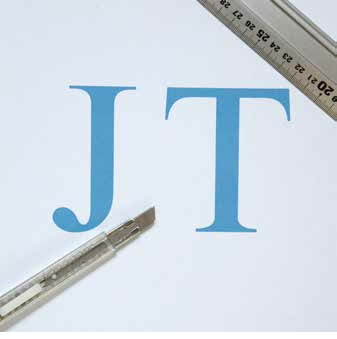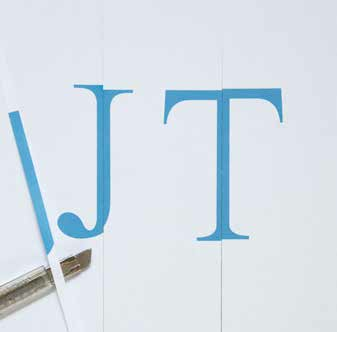Issue:
Can the country’s most prestigious English-language daily survive and retool for the global marketplace?

Japan’s premier English-language newspaper appears to have gotten lighter. In April, The Japan Times shrunk on some days by nearly 15 percent, going from a skinny 14 pages to an anemic 12. For the same price (¥210), readers got more wire copy and less content written by the newspaper’s journalists and contributors. Features, the community pages, stage and movie reviews have been trimmed.
Some Japan Times staffers have greeted the changes with dismay. Following its redesign and decision to tie up with the International New York Times In 2013, a rare bout of optimism broke out at the paper. But that seems to have dissipated as some editors are now questioning the wisdom of reducing original content to help the 118-year-old title survive. “It seems to smack of desperation, and fly in the face of the strategy announced only 18 months ago,” said one.
(Full disclosure: I am a contributor to The Japan Times.)
Edan Corkill, one of the paper’s two managing editors, rejects such criticism. While admitting that the last few years have been “really tough,” Corkill insists that the size of The Japan Times has always fluctuated. (For the record, the average page count, excluding Sundays, has gone from 13.84 in January to 12.3 in April; all but three of the papers 23 of the 26 have been 12 pages).
Even Corkill admits, however, that print circulation is unlikely to grow “particularly strongly.” That may be an understatement: The paper’s website cites 45,000 print copies a day, down from 74,000 in 1991. The real circulation, minus giveaways, may be significantly smaller.
The same trend, needless to say, is being seen across most of the developed world. In the five years leading up to 2014, newspaper circulation fell by over 10 percent in North America, 20 percent in Australia and Oceania and nearly 25 percent in Europe, according to the World Association of Newspapers and News Publishers. Print advertising worldwide declined 13 percent over the same period.
British newspaper sales shrunk by 8 percent last year; in the once lucrative UK Sunday market, total circulation was down by nearly half, to 6.7m from about 12.8m a decade ago. The picture is similar in the Unites States: Print-ad revenue at the iconic Washington Post slumped by a head-spinning 61 percent between 2007 and 2013.
The print bloodbath in the more affluent countries is slightly counterbalanced by newspapers’ popularity else-where: Print circulation actually rose 2 percent globally in 2013 mainly thanks to rising circulation in Asia. And once online readers are factored in, overall readership is growing: Globally, around 2.5 billion people read newspapers in print, another 800 million of them on digital platforms.
Digital editions gaining weight
This, of course, means that digital is increasingly driving strategies. Newspapers have learned to retool for their online readership, creating some unlikely winners and losers. Three years ago the New York Times was toppled from its perch as the world’s biggest newspaper website (according to Net analytics company comScore) by Britain’s right-wing Daily Mail, with its frothy diet of celeb pictures and human interest stories.
The battle to survive is increasingly hard-shouldered, with the most successful publications outgrowing their national roots. Two-thirds of the Guardian’s readership is now outside the UK, thanks to its expanding online presence. In fact, in 2012, the once crusty daily became the world’s third-most read newspaper website (after the New York Times and Huffington Post) with over 30 million readers.
There are other reasons for this success. The Guardian’s decision to adopt a “digital first” strategy in 2011 contributed to its exploding online readership. The British online news sites have proved particularly popular in America, where what The Economist calls their “po-faced” rivals tend to be more skittish about political leanings. As Fox News discovered, many “Americans like their news sources to have a political slant,” said the London weekly.
The economics of going global are not hard to figure out. With so much news now available for free, and print sales plummeting, the alternative is to cast the online net wider for readers of the same content. But here the biggest problem, notoriously, is how to monetize all those millions of eyeballs. Online income is a fraction of its hardcopy alternative: about one-fifth of total revenue for the most successful titles; in most cases far less. The ones that are doing well have established a distinctive online identity. U.S. readers of the Guardian know they’ll be served a serious, left-leaning view of the world.
So whither the Japan Times? The paper still easily outshines its main print rival, the Japan News, reborn two years ago from the former Yomiuri and widely seen as an unabashed cheerleader for the Liberal Democratic Party. Virtually all the content is translated from the staid parent paper, and its coverage of historical issues may be unpalatable to foreign readers.
Last year, for example, the Yomiuri parent apologized to its 10 million readers for using the term “sex slaves” in dozens of articles about the so-called comfort women since 1992.
The Japan Times’ more critical distance from the government could plausibly give it a better chance in the global brand stakes. And indeed, like its far bigger British rivals, readership abroad is growing: 60 percent of the total traffic to the website is now from outside Japan. The newspaper says 30 percent of digital subscribers pay in dollars; the remainder pays in yen. It’s safe to say that, like most news titles, more people are reading than ever before even if they’re not paying for it.
The newspaper’s management accepts that the web is key. Last year it adopted a digital-first policy, following a major design overhaul of its website so that it can now be viewed on mobile devices. This year it hired a full-time employee to handle social media.
Mobile traffic to the website has tripled since the overhaul, says Corkill. “We’re hoping the website will become a platform for revenue right through to 2020.” He adds.
While the newspaper claims eight million page views per month, it is cagey on the number of subscribers who have signed up since it introduced a metered pay-wall in November 2013. Corkill says paying subscribers doubled in the last fiscal year, and is growing month-on-month. Subscription rates dipped slightly for a few months after the pay-wall was introduced but rebounded and “are now higher than they were during the period Jan-Oct 2013.”
Staying more attractive than competition
The online paper may soon have some serious domestic competition. In April, a subsidiary of Fuji Media Holdings bought GPlus Media Co., the company that operates the Japan Today website. As I write, it’s unclear what changes the powerful new owners (overseers of the Fuji TV network and affiliate of the Fujisankei group) will bring, but it will almost certainly mean a grab for the sort of readers who hang out on the Japan Times website.
More people are reading it even if they’re not paying for it
The April editorial changes at the struggling paper, however, have brought mixed reviews among staff. Critics say the online service suffers when print copy is cut. “People were quite upset by the cuts but they don’t want it to get any worse,” said one. “We’re just worried about what will happen down the road.” On the features side, the impression of many at the paper “is that a lot of those [original content] stories attract readers on the web as well,” said the source. “Cutting those pages may hurt readership.”
Given that the paper comes bundled with the INYT, and that the Japan Times’ strongest suit is its “Japan-focused original content,” said another former staffer, “it does seem a shame to cut sections with original content rather than the pages of foreign news wire copy.” The content that is being cut is largely generated by freelancers, however, “which is obviously more expensive to produce, so the motivation is pretty clear to see.”
A third source agreed, saying the newspaper’s management had an “obsession” with running large amounts of foreign news wire copy. “Bending over backwards to satisfy a dwindling number of older readers of print . . . and embassy types” with outdated national-day features was also a mistake, said the source.

Corkill calls the assumption that people buy the newspaper for original content, however, “flawed.” He cites a readers’ survey last year that found world news was the second-most popular section. “We have a wide variety of readers and we respond to what they tell us,” he says. “Stock pages were very unpopular so we cut them.” He points to the last financial year as a “turning point” in the newspaper’s history. “We were not in a place that was sustainable. But we are now laying the foundations for the future.”
The newspaper has been a subsidiary of Nifco, which makes plastic parts for cars and homes, since 1996. The chairman of both, Toshiaki Ogasawara (84), has never publicly wavered in his commitment to the Japan Times stable, which includes a book publisher, a weekly, a tabloid targeting English learners and several new titles.
The market verdict on the April changes has yet to be seen, but not everyone is unhappy. “The thinking is that younger readers don’t buy newspapers, and I’m not sure that’s an incorrect assumption,” said the former staffer. But he also suspects that older readers will be more sensitive to the perception of shrinking value, “and so it could backfire quite badly.”
“Some members of upper management are actually very smart and resourceful,” he continues. “But other key management members unfortunately don’t seem to understand much about quality journalism, nor business for that matter. They’re also not very good at drawing on the ideas of their staff, effectively bringing in outside help or making changes to struggling departments such as sales.”
“It’s sad to see them repeatedly making bad decisions, especially as The Japan Times really is a special and important publication, with a very strong niche and the potential to fill it brilliantly.”
That seems to represent the dominant view. Most associated with the venerable newspaper wish it the best, while hoping that it is not fluffing its chance to become a global brand.
David McNeill writes for the Independent, the Irish Times, the Economist and other publications and is a coordinator of the electronic journal www.japanfocus.org.

